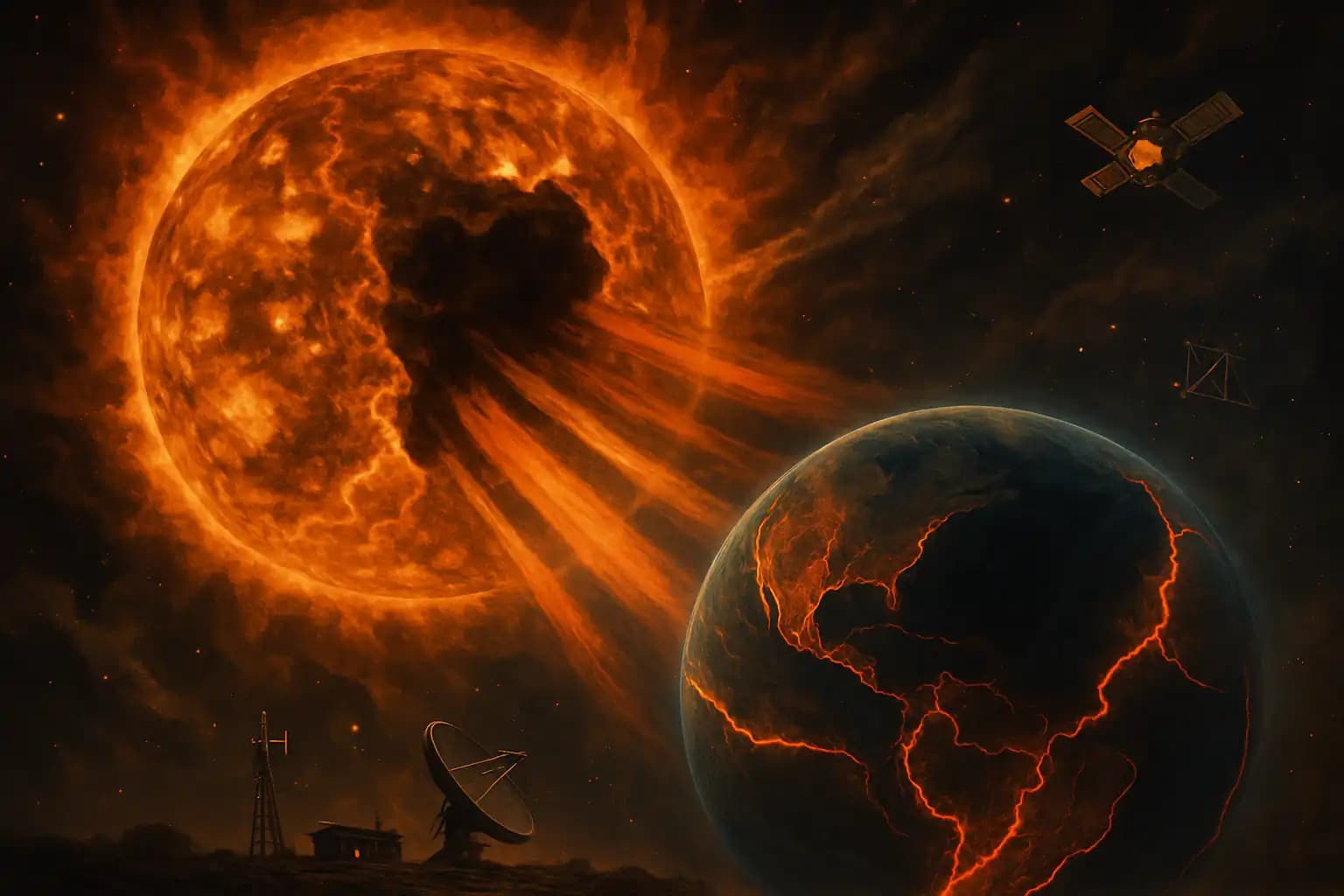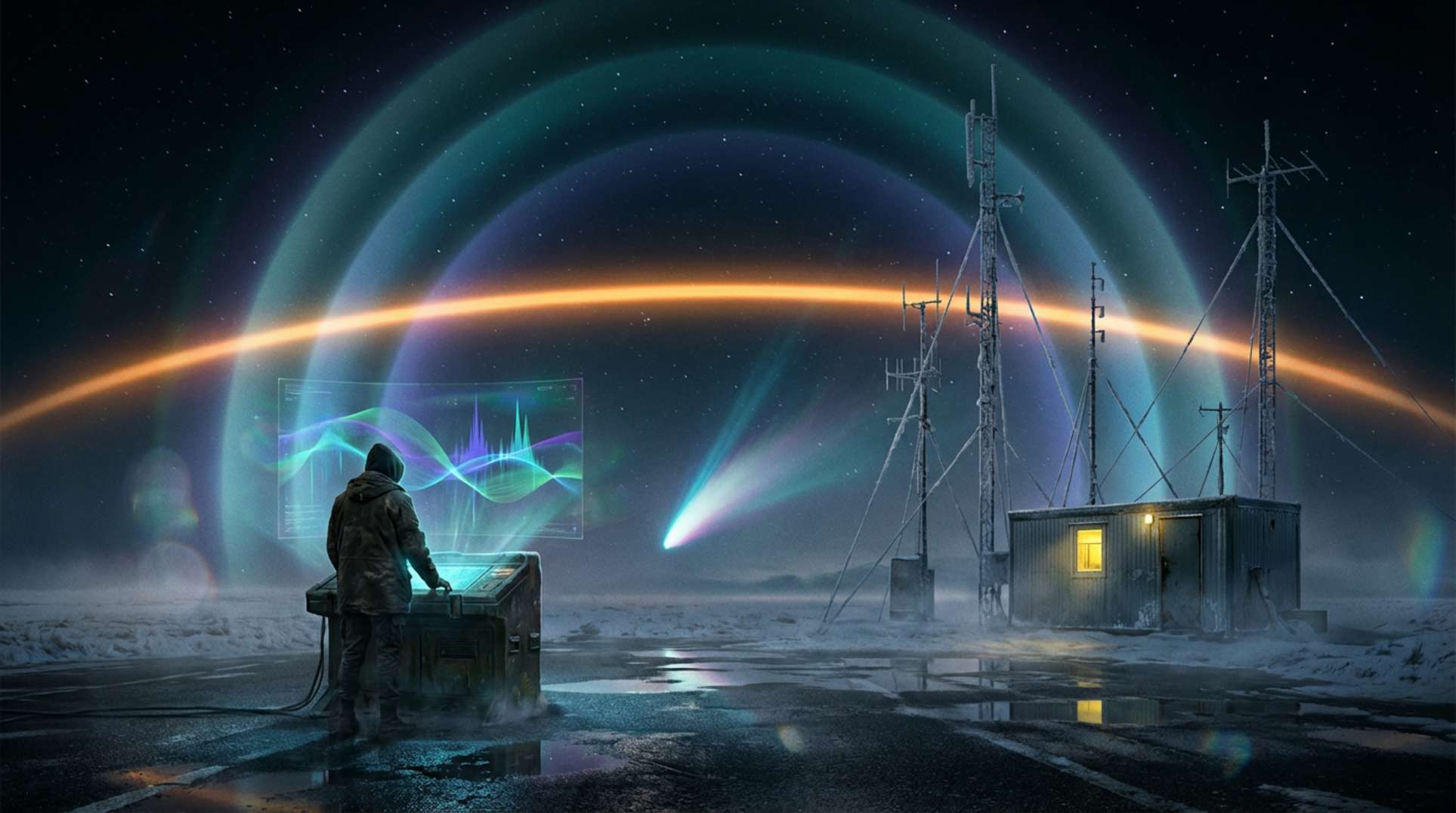The planet’s crust feels unusually silent. For over three and a half years, no magnitude 8 or greater earthquake has ruptured the Earth, marking an unprecedented record of seismic calm. But don’t let that quiet deceive you. Solar physicists are raising alarms: this prolonged megaquake drought signals we might be overdue for disaster.
This wave of anxiety isn’t typical tectonic twitchiness. The sun itself has become the focus of research—months of abnormal solar activity have coincided with a massive coronal hole aligning with Earth. If you haven’t updated your emergency supplies, it’s time to do so.
The Growing Mystery: Coronal Holes and Earthquake Droughts
Solar coronal holes—huge, dark regions on the sun’s surface—release high-speed solar winds toward Earth. Anecdotal correlations between “geo-effective” coronal holes and massive earthquake clusters have intrigued scientists for years. The current coronal hole is striking; with each 28-day solar rotation since late 2024, it has grown to nearly a quarter of the visible solar disk, directing seven days of relentless plasma bombardment toward Earth.
The past shows ominous precedents. Satellite images before the 2011 Japanese earthquake (and its Fukushima disaster) displayed a similarly positioned coronal hole facing us. While not everyone agrees on causation, the link deserves serious consideration and has fueled specialized reports like this deep dive on solar-earthquake risk. The stakes are high. Data from the USGS shows that magnitude 8 earthquakes typically occur about once every 14 years in seismic hotspots. The clock continues to tick.
Can Solar Activity Really Trigger Giant Earthquakes?
Traditional seismology focuses on ground-based monitoring and tectonic stress studies. However, solar-terrestrial relations are now gaining scientific attention, especially as evidence mounts that solar phenomena may trigger pre-existing tectonic stresses. The STEREO mission (full Wikipedia profile) and similar solar observatories document how large coronal holes and solar wind streams energize Earth’s magnetosphere, altering pressure distributions and, theoretically, nudging faults toward rupture.
Most scientists hesitate to label solar wind as the cause of megaquakes, yet new research highlighted in analyses (see Live Science) shows that significant solar events, especially those that maintain geo-effective orientations, correlate with notable seismic increases. “Correlation is not causation,” skeptics argue, but similar claims were once made about weather patterns and flu seasons—now proven connected.
The Mathematics of Seismic Pressure and the Danger of Delay
Here’s the harsh reality: the longer the interval between major quakes, the more energy accumulates across large fault systems. According to the USGS, even tectonic slowdowns eventually end. When stress overwhelms friction, the resulting quake often proves catastrophic—especially with external (solar) electromagnetic factors increasing volatility. This build-up followed by sudden release parallels other natural resets documented in reviews of America’s geological cataclysms and ancient mass disasters explored in research on long-term earth cycles.
Seismic history abounds with nasty surprises. Prolonged calm has always, eventually, given way to devastation. Consider the implications of a massive, persistent coronal hole; risk factors escalate. Techno-pessimists and seasoned preppers echo warnings reminiscent of the starkest cosmic alert systems in exposés like this AI disaster prediction analysis.
Watching the Sun—And the Fault Lines
Technology is transforming hazard forecasting from superstition to data-driven science. Tools like the STEREO spacecraft monitor solar activity, providing potential early warnings—though they are narrow—on extreme geomagnetic and seismic events. Earth faces pressure, too: confidence in our infrastructure and response ability remains disturbingly fragile. Articles examining magnetic pole reversals highlight worries about civilization’s breaking point.
Ultimately, whether due to cosmic weather, tectonic pressure, or that nagging sense that the planet’s next big shake is overdue, the best defense is relentless vigilance. For those awaiting fate’s next move, or seeking scientific insights, keep a watchful eye on the Sun—and one on Unexplained.co. In times of seismic silence, often, it’s just the calm before a solar-fueled storm.





